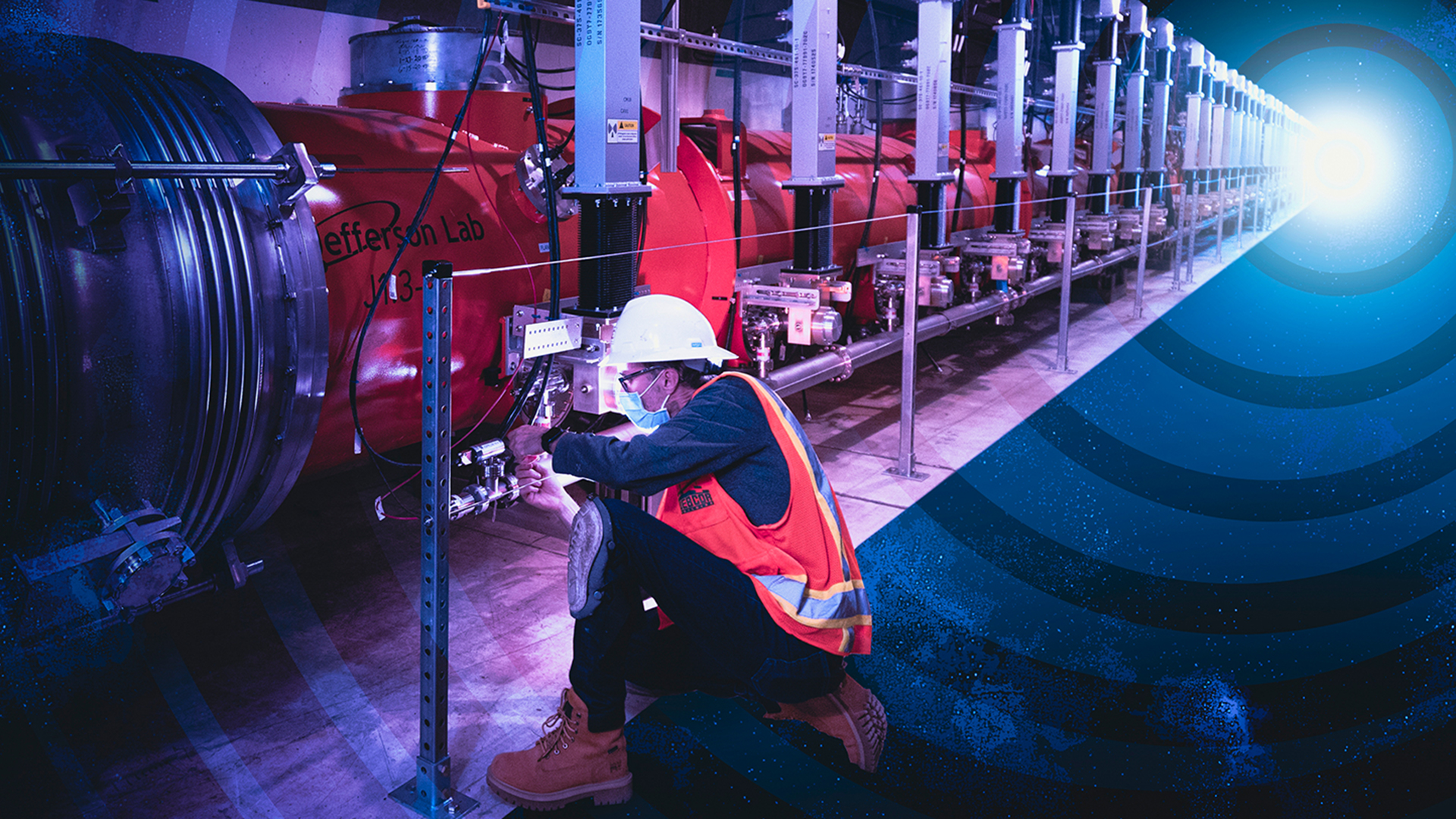The Linac Coherent Light Source-II sees its first hard X-ray laser beams following completion of an upgrade carried out with support from Jefferson Lab
Read the full SLAC News Release here.
The U.S. Department of Energy's Thomas Jefferson National Accelerator Facility congratulates DOE’s SLAC National Accelerator Laboratory on accomplishing “first light” in the upgraded Linac Coherent Light Source (LCLS). The world’s brightest X-ray free-electron laser (XFEL), the upgraded LCLS, has generated its first laser beams following an upgrade over a decade in the making.
Jefferson Lab was a key partner in the upgrade project, which included five national labs and one university. The lab provided the liquid helium cryogenics plant for the project and half of the superconducting radiofrequency (SRF) cryomodules installed for the upgrade, as well as the systems that allow its operators to control the cryomodules. Many Jefferson Lab staff members in a wide range of roles supported the LCLS-II upgrade project through to completion.
“It is wonderful to see this tremendous achievement, which is powered by the state-of-the-art LCLS-II superconducting accelerator,” said Jefferson Lab Director Stuart Henderson. “Jefferson Lab is proud to have contributed to this achievement through our construction of half of the cryomodules, in collaboration with Fermilab and SLAC, and our design and procurement of the two large cryoplants. This achievement builds upon years of development of this powerful particle accelerator technology.”
The superconducting accelerator that powers LCLS-II is made up of cryomodules. Electrons zip through the cryomodules, where they are loaded up with extra energy. Then, magnets make the electrons zigzag to give off their energy as X-rays. These X-rays make up the X-ray laser beam.
"This is the culmination of over 10 years of work by players from all over the world. We had our ups and downs, and we pushed the envelope to achieve something truly special. To our colleagues at SLAC, JLab is proud to be part of this journey, and we hope you enjoy running the machine as much as we did building it. Congratulations, and good luck!" said Naeem Huque, Jefferson Lab LCLS-II project cryomodule production CAM/lead engineer.
Jefferson Lab also led the effort to design and produce the resonance controls and cryomodule interlocks for all 1.3 GHz cryomodules throughout the LCLS-II linear accelerator. Additionally, Jefferson Lab provided technical guidance for commissioning and operation of key components throughout.
“Everyone in the LCLS-II collaboration should be proud. In particular, the many hands across Jefferson Lab that contributed to the world-class SRF and cryogenics technology development can attest that the project was challenging and a worthwhile effort. This first step lights the way toward all kinds of scientific discoveries. Congratulations to all that made this happen!” said Ed Daly, principal staff engineer in Jefferson Lab’s Multi-Lab Partnerships Division and a key manager in the project.
LCLS-II creates unparalleled capabilities that will usher in a new era in research with X-rays. The X-ray pulses generated by the machine act like a powerful microscope, allowing researchers to watch chemical reactions in real time, probe materials and more. Scientists will be able to examine the details of quantum materials with unprecedented resolution to drive new forms of computing and communications; reveal unpredictable and fleeting chemical events to teach us how to create more sustainable industries and clean energy technologies; study how biological molecules carry out life’s functions to develop new types of pharmaceuticals; and study the world on the fastest timescales to open up entirely new fields of scientific investigation.
“As accelerator experts, we design, build and study the research machines that enable scientific discovery,” said Andrei Seryi, Jefferson Lab associate director for Accelerator Operations, Research and Development. “We are proud of our contributions to this project, and we’re looking forward to the many advances it makes possible.”
Further Reading
SLAC fires up the world’s most powerful X-ray laser: LCLS-II ushers in a new era of science
Jefferson Lab: LCLS-II Support
SLAC’s Superconducting X-Ray Laser Reaches Operating Temperature Colder than Outer Space
Cryogenics Group Helps X-Ray Laser Chill Out
Accelerator Makes Cross-Country Trek to Enable Laser Upgrade
Contact: Kandice Carter, Jefferson Lab Communications Office, 757-269-7263, kcarter@jlab.org


